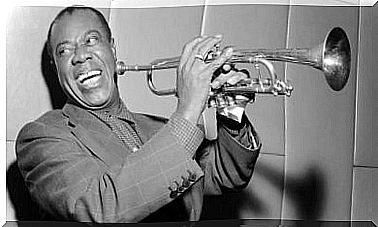Fester’s Behavioral Model To Explain Depression

Depression is one of the most disabling psychological disorders that exist, and although it may seem paradoxical, one of the most invisible. It doesn’t just consist of a sad or dejected mood; its symptoms can range from lack of pleasure in any activity to the most extreme motor inhibition situation. Some patients even report symptoms of a physiological nature, such as asthenia, lack of appetite, somatic symptoms and insomnia.
In the scientific literature on the subject, we can find several hypotheses. From the purely biological, which refer to the biochemical imbalance of certain neurotransmitters in the brain, such as serotonin, to hypotheses of an environmental or psychological nature.
Explanatory theories based on the more biological part account for a reduced part of all existing symptoms and types of depression. Furthermore, they leave the door open for the patient’s own control in their own healing.
While it is true that thanks to these theories we can now have antidepressants, some explanations are needed to help patients take responsibility for their illness and find a way to help themselves.
In this sense, Fester’s (1965, 1973) behavioral model can help us understand how behaviors that are poorly reinforced by the environment, in addition to avoidance or inhibition that are reflected in the patient, can lead to a depressive state.

Fester’s behavioral model
Charles Fester was one of the first psychologists to study the depressive phenomenon within a clinical/experimental setting. In addition, other behavioral approaches follow from his work.
His idea is that there is an excess of avoidance or avoidance behavior in the face of aversive stimuli. For Fester’s behavioral model, there are also four processes that, isolated or interacting, can explain depressive pathology.
The processes are as follows:
- Unexpected, sudden and rapid changes in the environment that imply the loss of sources of reinforcement or discriminative stimuli that are important to the individual.
- An example of this might be the loss of a partner. This, in itself, is a source of reinforcement and, in addition, many other reinforcements in our life are linked to this relationship (common friends, leisure, children…). The person, due to a single discriminatory stimulus, namely the loss of a partner, ceases to perform other activities that were previously pleasant because they were performed together. Therefore, the reinforcers are further reduced, with the consequent lack of pleasure.
- Costly reinforcement programs that require major changes in behavior to produce environmental consequences. If a person has to devote a great deal of time and effort to studying to reach his goal and fails, he may develop a state of apathy or unwillingness to go back to studying. You will have to mobilize a lot of energy and the result is uncertain.
- Absence of behavioral repertoires, blocked by pathological spirals in which a low index of positive reinforcements causes a reduction in behaviors which, in turn, leads the person to a bad adaptation to the environment and, therefore, to a lower number of reinforcements. If my first contacts to try to find a partner are not very positive, I may develop avoidance behavior when the possibility of meeting people arises, which leads me to have less chances that the contacts will be positive. This reduction in opportunities, in turn, generates more under-reinforcement.
- Limited observational repertoires that would lead people with depression to distort reality and behaviors that are rarely reinforced. If, for example, a person moves abroad, he or she needs to observe the new environment and learn to adapt to it. Otherwise, it will be more difficult to get the reinforcements that somehow “immunize” you against depression.

Depression treatment based on the behavioral model
Based on Fester’s behavioral model, many of the depressive behaviors “encourage” the individual to avoid aversive stimuli or unpleasant situations in which an additional reduction in positive reinforcement could be expected. In this way, such behaviors are maintained by negative reinforcement (the person feels short-term relief from avoiding something that could be unpleasant (anticipation)).
From this perspective, the treatment of depression – evidently, when it is not an endogenous depression – would aim to increase the positive reinforcements that the person can get from their environment and reduce avoidance behaviors over potentially reinforcing behaviors.
Something that seems so simple and inviting, like meeting friends for a drink, for the person with depression can be a pretty steep slope. Therefore, the psychologist must establish an intelligent reinforcement recovery plan tailored to the person. The important thing is not to keep losing reinforcers and prioritize small advances.
behavioral activation
Behavioral activation is done as slowly as the patient wants and needs. We must not set unrealistic goals that will not be achieved, because what we can achieve is even more hopelessness and self-criticism. Any step forward will be a great achievement.
As the intervention progresses and the person gains more reinforcers and accepts their negative emotions, their mood will increase and, consequently, so will their motivation.
Anhedonia, asthenia, and apathy will subside and the patient will begin to feel better. This activation also has repercussions at the cognitive and social level. Their pessimistic anticipations change to more realistic ones and, in turn, their surroundings, which perceive the change, will also be more predisposed to be inclusive and to accompany positive inertia.









